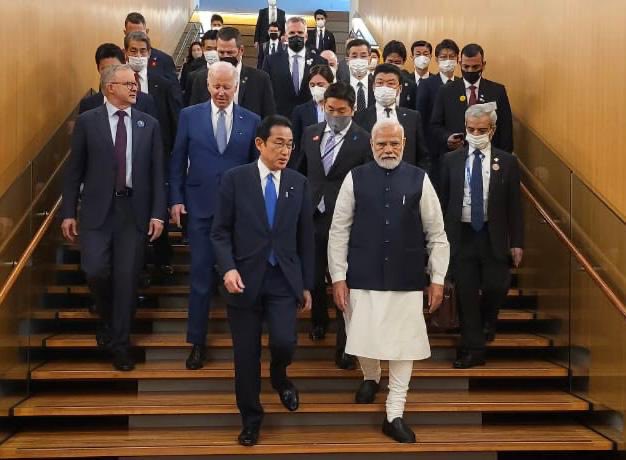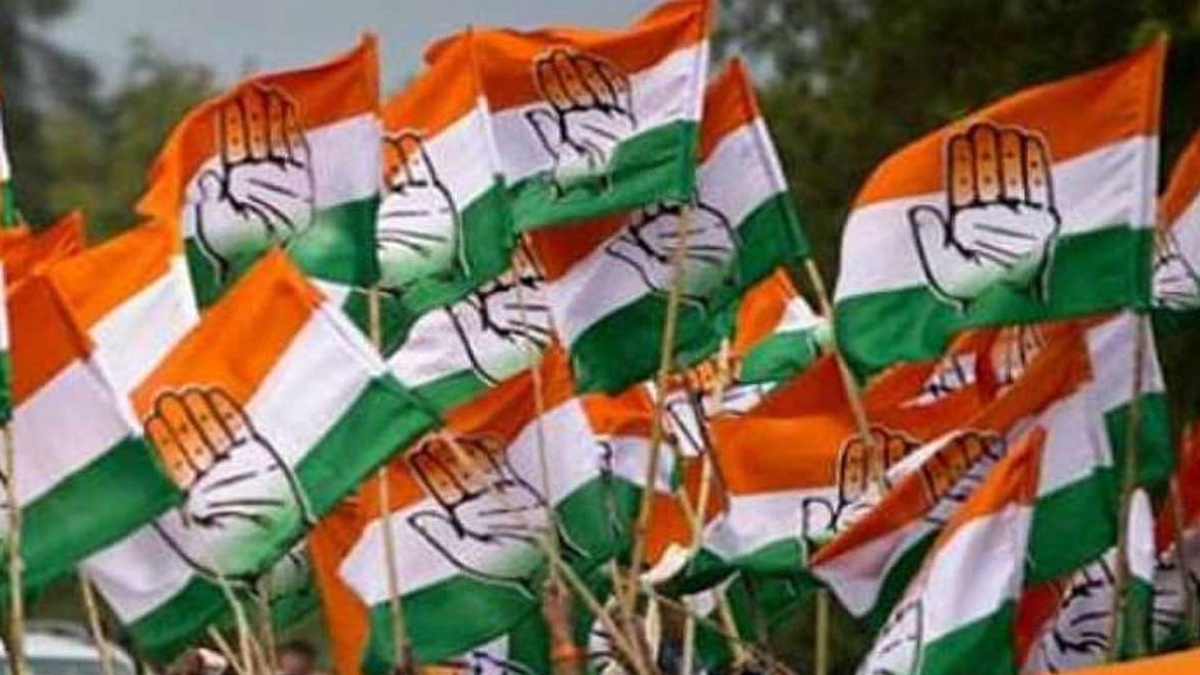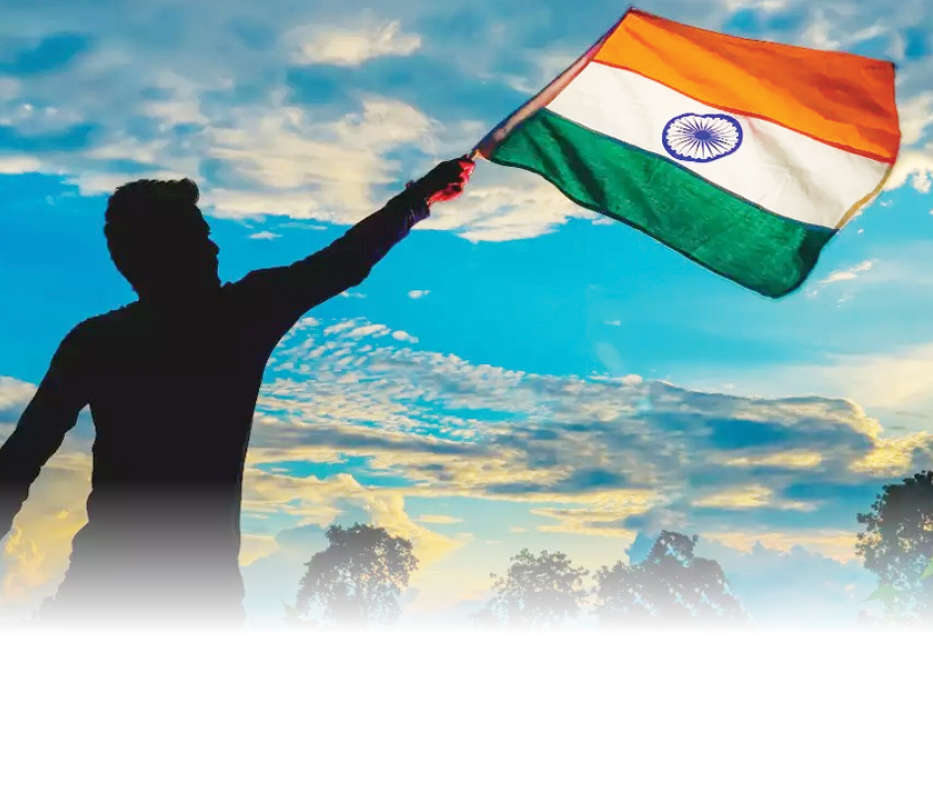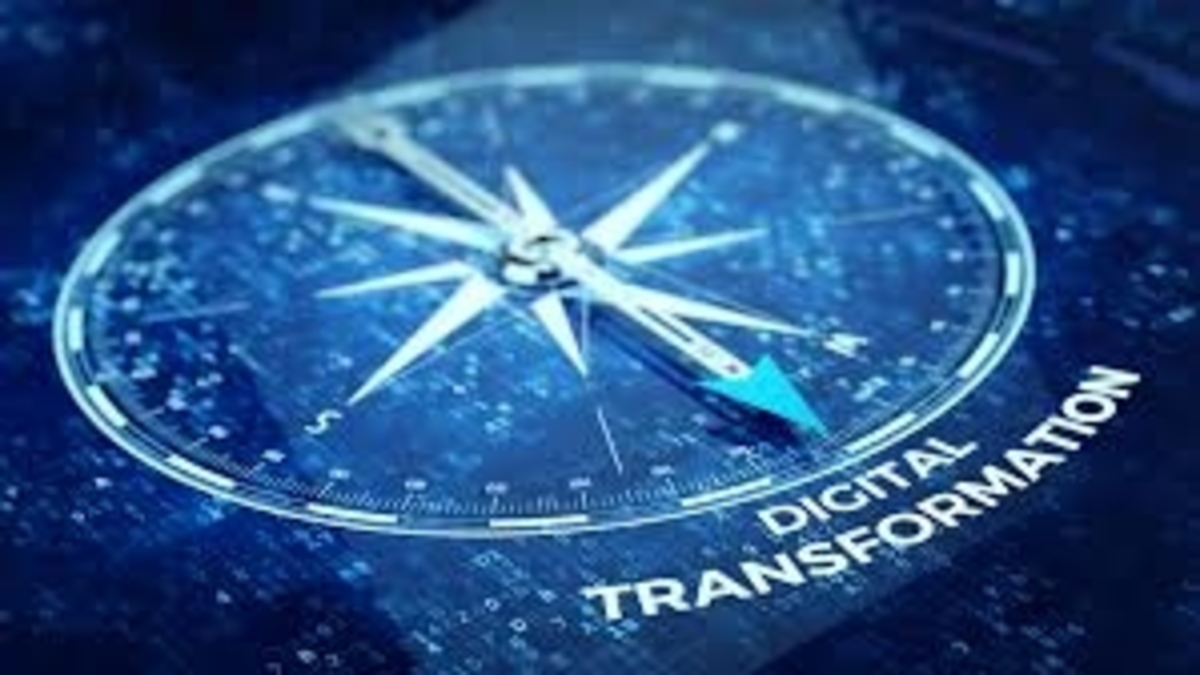One should make good people their friends. One who keeps good friends, benefits, and lives in peace. – Rig Veda
Time, when in a span of 15 days (March –April 2022), 11 high-level delegations from foreign countries (including the Chinese foreign minister) visited India, and India is visiting Japan to strengthen the Quad, showing the rise of a new economic coalition or something more or something else?
There have been murmurs on the sidelines about Quad Plus. What about Supply Chain Resilience Initiative? What is this Quad, Quad Plus, and why have Japanese ties become so relevant in recent times under the recent geopolitical environment?
Starting from the historic perspective, relations between India and Japan have been strong for centuries on account of Buddhism which originated in India and spread through entire Japan.
In the last century, in Auust 1942, one of the greatest Indian leaders, Netaji Subhas Chandra Bose formed the Indian National Army (INA) with Japanese support and the Japanese-captured Indian prisoners of war.
The offensive from this army (INA) and their grit along with Satyagraha from within led by Mahatma Gandhi, severe losses (suffered by Britishers in WW II), the huge quantum of debt (raised by the UK to fight the war), and the massive cost of maintenance of a plundered nation forced Britishers to give India Independence in 1947.
Just before the Indian Independence in Feb 1946, the soldiers, officers, and personnel who were captured by the Japanese belonging to the Royal Indian Navy (one of the bravest contingents of Indian fighting for Allied forces posing a strong opposition to the Japanese invasion in the Indian Ocean during World War II) and were eventually freed by Japanese (post-WW II) raised a revolt and organized a mutiny to overthrow British.
Indian hearts and Indians’ minds by now were aligned to India and Indian Independence and eventually, Independence came in.
Fast-forward 75 years to the present day, the official reason why the Prime Minister of India visited Japan was to be part of the second physical meeting of Quad. A group of 4 countries, the US, Japan, Australia, and India.
Initiated in 2007 and finally taking shape in 2017, Quad or the Quadrilateral Security Dialogue came into existence. Today what is perceived as “Asian NATO” the Core thought process of Quad came into existence in 2004 on account of the Boxing Day Tsunami that killed 2.28 lac people in 14 countries.
From a humble humanitarian helping hand approach Quad has turned now out to be a formidable force to contain the influence of the reign of China in the Asia Pacific region.
Over the last 2 decades with the rise of China, there has been a steep fall in allies China. All 4 founding or Core members of Quad have or continue to have challenging relations with China.
AUSTRALIA, INDIA & CHINA
Starting with Australia. Australia’s largest trading partner is China, Australia is the largest exporter to China (37%) by a mile (the second largest being Japan with 11% exports) and now Australia wishes to reduce its export dependence on China.
Why this change in mind, change in alignment, change in future strategy?
In May 2020, Australia called for an independent probe into the origins of the coronavirus pandemic, which emerged in the Chinese city of Wuhan, infuriating China. In April 2021, Australian Foreign Minister Marise Payne cancels two MOUs (Memorandum of Understanding) signed by the state of Victoria in 2018 and 2019 with China’s National Development and Reform Commission on Chinese participation in infrastructure projects under China’s Belt and Road initiatives.
In April 2022, Australian Minister for Defence Peter Dutton accused China of paying bribes to win international deals. Why this distrust, mistrust, and unease between Australia and China, When Australia’s largest output is absorbed by China?
It’s a long story in itself and it all started with espionage by Huawei – the largest manufacturer of telecom, equipment, smart devices, and consumer electronic items. On the recommendation from the Australian Security Intelligence Organization (ASIO) concerned with cyber security & espionage, in 2010, Australia’s National Broadband Network quietly rejected Huawei’s bids for the creation of the national broadband network. In 2018 Huawei and ZTE (Chinese telecom equipment manufacturer) were banned from constructing Australia’s 5G network and the saga started.
Once a friend, now a foe, seeking more de-alignment. Somebody’s loss is always somebody’s gain. As Australia was looking to de-align itself from China, India emerged as a formidable, credible, ethical, all-weather partner to Australia.
Swiftly, in April 2022, India strengthened its ties & alliance with Australia by signing the Economic Cooperation and Trade Agreement (ECTA) that aims at doubling bilateral trade in the next five years to USD 45-50 billion from USD 27 billion as of FY 22.
Presently India is Australia’s seventh-largest trading partner, Australia wants India to be top three export markets by 2035. ECTA was historic in the way that tariffs were removed on more than 85% of Australian goods exported to India. In return, Australia agreed to Indian terms of 96% of Indian goods arriving in Australia to be duty-free.
On the Oil side, India is tying deeply with UAE giving UAE companies equivalent status as compared to Indian businesses for sourcing done by the Indian government on the other hand, with Australia India is finding an ally that shares common insecurity & challenges with another Asian giant China.
Australia on an ongoing basis has backed the US, stating that there is ‘no legal basis to several Chinese claims in the disputed South China sea.
THE UNITED STATES, INDIA & CHINA
The US (United States of America), the second formidable partner in Quad wishes to control its trading partner China’s might and influence in the Asia Pacific region by Quad. Also, the US is an ally of Taiwan and in case of aggression by China to annex Taiwan which China believes is part of the People’s Republic of China will need assistance from Quad allies.
To make the geo-political situation a little more chaotic, a latest news coverage by a reputed publication suggested that the Chinese President, aged 68, is suffering from a cerebral aneurysm, a condition when a bulge forms in one of the blood vessels in the brain with a 50% probability of mortality and Chinese President publicly vowed in 2019 that Taiwan must and will be reunited with China and that China reserves the right to use the force. In such a scenario, the US finds India’s largest military as a natural ally against the largest military in the world.
INDIA
India welcomed its way into the Quad as it enabled India both in terms of economic ties as well as a forging formidable force in case of aggression. India had in the past and recently witnessed conflicts with China (in 2020) in the Galwan Valley, the Eastern region of Ladakh. For decades, India continues to fight and reclaim its rights and control over parts of Aksai Chin, Himachal Pradesh, Uttarakhand, Arunachal Pradesh, and Ladakh that are illegally controlled and occupied by China.
On the economic front, India had an import of 100 billion USD from China with India’s trade deficit with China clocking a whooping USD 69.38 billion in 2021. India surely wishes to replace this as quickly as it can. Quad surely can do wonders.
JAPAN, INDIA & CHINA
The next pillar of Quad, Japan has been India’s oldest ally in development, and both have deep social as well as historic links as covered in the earlier part of the note.
The Japanese investments in India touched USD 32 billion between 2000 and 2019, across all core sectors including automobile, electrical equipment, telecommunications, chemical, insurance, pharmaceutical, etc. What was done in 19 years, nearly one-third more (USD 42 billion) will be done in the next 5 years as investments by Japan in India (Intent & actions remain so)?
In 2014, India and Japan entered into a strategic global partnership, a unique and first of its kind in the world whereby it was agreed (other things as well) that in a specific period of the next 5 years Japan’s foreign direct investment and the number of Japanese companies operating in India to double and the target was met.
As India is important to Japan for its slow or DE growing economy with an aged population to rely on the huge market like India, India is dependent on Japan for its cheap capital to build infrastructure to grow its economy on a fast track and provide large scale employment to Indian Youth who need jobs to sustain the family and country.
China remains Japan’s largest trading partner but the conflict continues with China despite economic ties. The conflict started in 2012, when Japan nationalized the Senkaku islands (the Senkaku Islands are a group of uninhabited islands in the East), sparking widespread protests across China. Since then, China has affected a strategy of active non-acquiescence to Japan’s occupation of the islands.
Though Quad was largely formulated and constituted before Covid, Covid expedited the Vaccination diplomacy, Where Russia (not in the context of Quad) China, India, and the US-led the vaccine manufacturing largely.
In a couple of meetings virtually in 2020, South Korea, Vietnam, New Zealand, Brazil, and Israel, most of which are allies of the US took part and there have been murmurs of having these other nations, which share common anxiety against China can be brought in the group known as Quad Plus.
Covid was handled by all countries differently as per their capacity and wisdom and unique amongst it was and are China, where one witnessed zero-tolerance policy on something which is beyond human control.
Thus world which is largely dependent on China across most goods & services found India as a strong ally and thus came China + 1 policy for the world.
Witnessing the disruptions in the Supply chain caused by Covid and to handle any other equivalent situation better and reduce vulnerability and dependence on China, thus came the Supply Chain Resilience Initiative (SCRI) is a trilateral agreement that was led by Japan, Australia, and India. The core idea of this initiative was to create a “virtuous cycle” of strong, sustainable, balanced, and inclusive growth throughout the Indo-Pacific region by sharing best practices, investment promotion, and buyer-seller matching events for supply chain diversification.
Quad, Quad Plus, SCRI are some of the reasons why India visited Japan, but more importantly, to, strengthen ties to fast-track cheap capital flows into India from Japan so that India can continue to remain the Engine of growth for the World, clocking CAGR of 8% real GDP growth.
Interestingly Japan chose India from thousands of miles away as a partner for growth and a friend, and India relied upon a nation far away instead of its neighbours.
As one says, one cannot choose neighbours but surely can choose whom one remains friends with.
Siddhartha Rastogi, Managing Director & COO, Asset Management Vertical of a leading full-service Investment Bank. (The views and opinions expressed in this article are those of the authors and do not necessarily reflect the official view or position of any company or sister concerns or Group company where the Author is presently employed.)


 Opinion3 years ago
Opinion3 years ago
 Entertainment8 years ago
Entertainment8 years ago
 Entertainment8 years ago
Entertainment8 years ago
 Fashion8 years ago
Fashion8 years ago
 Opinion3 years ago
Opinion3 years ago
 Politics8 years ago
Politics8 years ago
 Entertainment8 years ago
Entertainment8 years ago
 Entertainment8 years ago
Entertainment8 years ago









